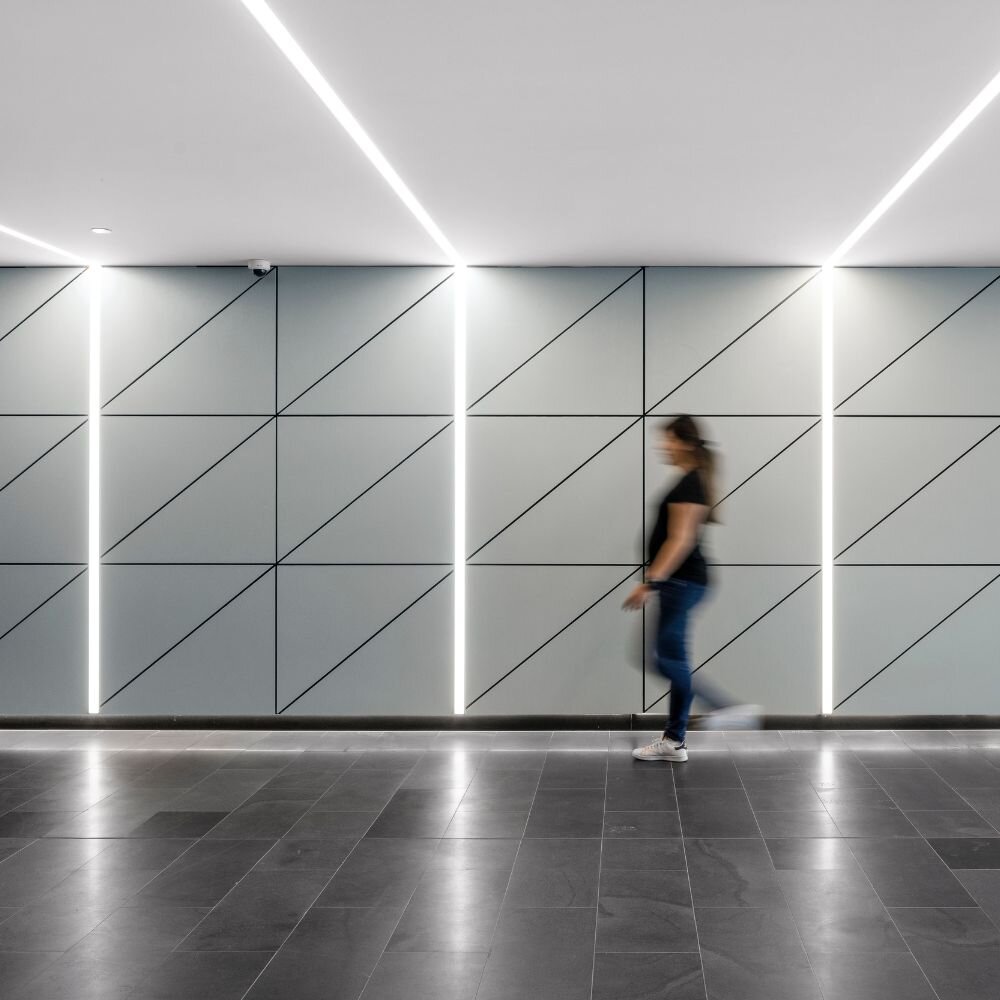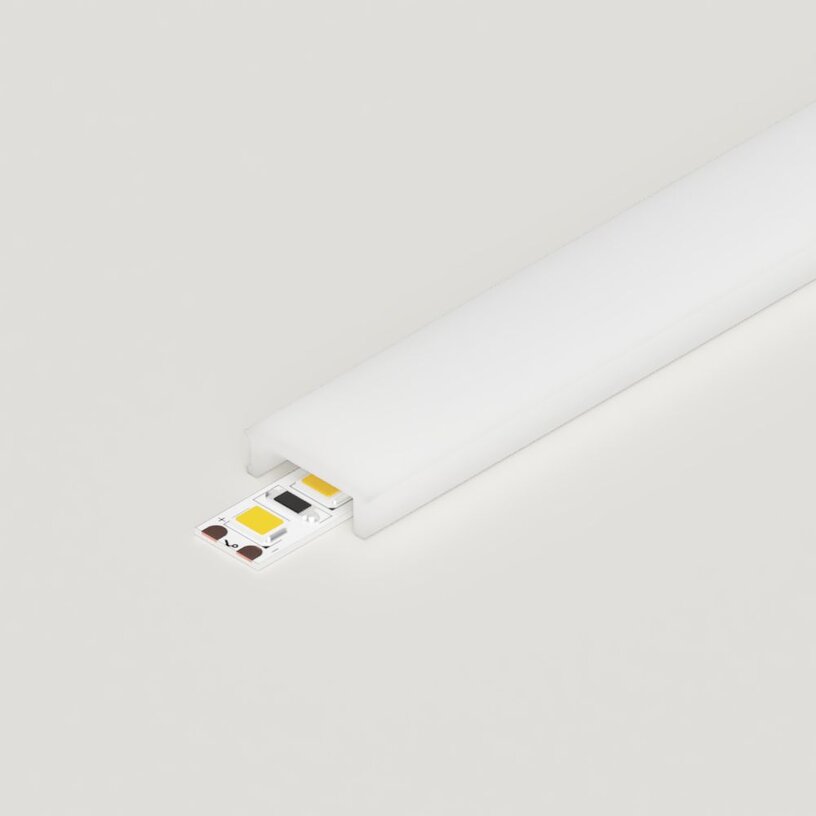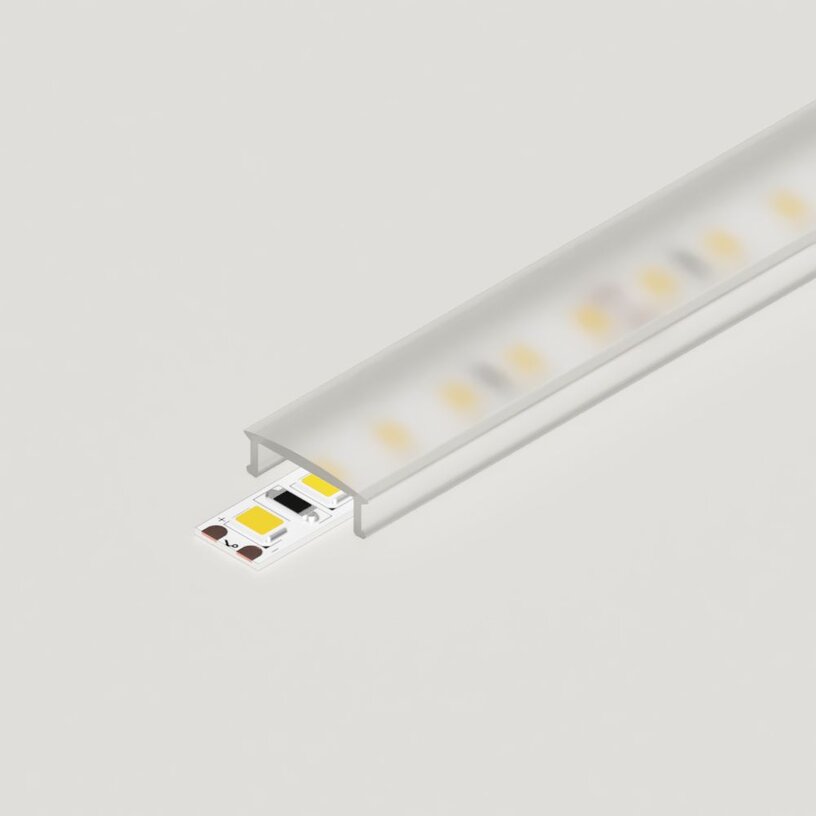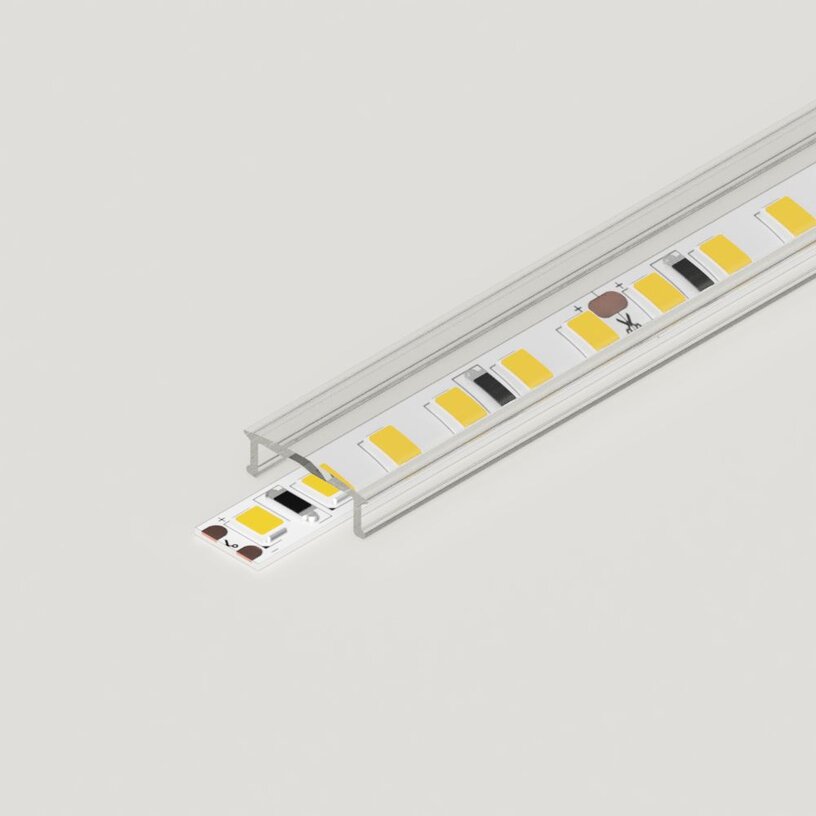Order by 23rd Dec 5pm for Pre-Xmas Delivery

The Complete Buyers Guide to LED Profiles
We have a wide variety of profiles to suit a multitude of uses. LED profile is an important aspect of any lighting project so we’ve written this useful guide to give an overview of the types of aluminium profile we provide and a few useful tips on which components to choose for a sleek and professional finish.
All of our profiles have an optional choice of diffuser and endcaps with the aim to provide an all in one lighting solution.
How to achieve a non spotting finish
We recognise that the finish on your project is paramount, and a sleek smooth finish is what is desired, we refer to this as non spotting where there are no visible dark spots along the linear source of light.
Below is a recommended approach on purchasing your profile components to help you achieve this non spotting look.



1) Take into consideration the depth of the channel you are using
When selecting your profile, the depth of the channel will have an impact on the non spotting finish, as the deeper the channel the more room the light has to dissipate against the diffuser. Selecting a deeper diffuser will also have an effect on the brightness, the further the LEDs are from the diffuser the less bright the overall finish will be.
2) Choose the right strip light for the job
LED strip light contains a number of LEDs per metre. When attempting to achieve a non spotting finish selecting a strip light with more LEDs per metre will help to ensure that your finished project won’t spot.
We recommend that you use an LED strip light with more than 120 LEDs per metre to help you achieve a non-spotting finish. If you are using strip light that has less than 120 LEDs per metre, we recommend that your profile has an internal depth of more than 16.6mm.
Other LED strip lights that have more than 120 LEDs per metre should produce a non-spotting finish. This includes our COB range which guarantees a spot-free light source.
3) Choosing the right diffuser
We stock 3 main types of diffusers
Transparent – Used for maximum brightness, this diffuser will not be able to provide a non spotting finish.
Semi Clear – Brightness is important but not essential, will provide non spotting capabilities if the correct tape is used. In this case we would recommend a strip light of more than 120 LEDs per metre to achieve the non spotting finish.
Opal – used where finish is of maximum intent, least likely diffuser to spot when illuminated.
Installing LED strip lights into profiles
When choosing the right strip light for your project it is important to take into consideration how the strip light will sit within the profile. The first aspect to consider is the width of the strip light. The strip light must be slim enough to fit into the channel, if the selected strip light is too wide it won’t fit inside the channel.
The cut points of the strip light are a factor to consider and how this measures up to the lengths of profile you require. Cut points on strip lights are variable so it is important to take this into consideration when selecting the right strip light for the intended length of the profile.
It is recommended that 24V strip light is required as there is less chance of a voltage drop and this reduces the risk of spotting on the finished product.
If the strip light runs too short, or is too far from the end cap where the wire is installed, a dark spot will be visible at the either or both ends of the linear light, which is not desired.
Achieving an water resistant IP65 rating on LED Profile
When creating a lighting installation for environments where an IP65 rating is required, it is important to us an IP65 profile and ensure that it is correctly sealed to avoid any leakage.
It is highly recommended to use an IP20 or IP65 strip light inside an IP65 rated profile. We do not recommended to use an IP65 strip light inside an IP20 rated profile.
If an IP65 strip light is used inside an IP20 profile, this will most likely allow moisture to enter the profile and cause condensation within the profile which will cause corrosion to the LED strip and cause potential danger within the circuit itself.
Whilst installing we recommend sealing the ends with silicone to reduce the risk of any water leakage.





